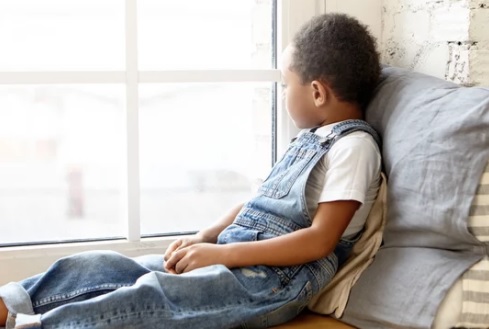
My kids rarely say "I'm bored!" anymore, but those times when they're piddling around the house or following me from room to room, seemingly anxious for something stimulating to do, that's when I know it's time to reach into my bag of tricks and help them create some magic. Not that I think there's anything wrong with being bored, because I don't. Boredom is often how the best ideas are born. However, sometimes we all need a little help getting busy and inspired. Here are some boredom buster ideas that are easy to implement:
1. Boredom Buster Jar: At the beginning of the month (or week), sit down with your family and brainstorm a list of activities that can be done alone or that you can enjoy doing together. Encourage your children to share their own ideas and help you decorate and label a simple jar as the family's "Boredom Buster Jar." They'll feel more involved in the project and more likely to think this is a "neat" idea, if they participate in the creation and idea generation. Next, write everyone's ideas down on slips of paper and as a group decide which ones should go in the jar. Anyone in the family can pull any idea out of the jar to fight the boredom blues.
Some ideas to get things started: follow along with a YouTube dance or exercise video, write a letter to a loved one, bake cookies, ride bikes, call a friend, watch a TV show, do yoga, read through a joke book, drink tea, jump in the bed, try a new hairstyle, clean out the fridge, make lists, play a board game, do something craftsy,
2. Stories Alive: It sounds too simple, but reading is one of the most important ways to keep young minds engaged during down time. Make reading even more fun by finding ways to bring the stories to life. For example, in the book Roxaboxen by Alice McLerran (affiliate link), children create a make-believe town in the desert out of rocks, boxes, and their imaginations. Read the book with your children and then challenge them to create their own town with materials they find in the backyard.
3. Art Start Box: You'll need to gather basic art supplies-child safe scissors, glue, markers, tape and construction paper. Put them in a special box along with empty oatmeal boxes and paper towel rolls, colorful magazines and bits of aluminum foil. Occasionally, add a special surprise like chalk, stickers, or stamp pads so there's always something new for the children to find. Even if you normally have these supplies around the house, it's fun for children to know that the Art Start Box is just for them. They'll probably have some good ideas of other household items that can be recycled to fuel their creative energies.
4. Family Performances: Break out old clothes or costumes and encourage children to make up characters and create a play to act out. They are the directors, actors, and producers. They can also make musical instruments out of pots/pans, wooden spoons, and empty canisters, and have a parade. Record or video the performances, and enjoy the replay. You'll also be capturing a bit of family history everyone will enjoy for years to come. One of my family's favorite ways to "perform" is to print out free Reader's Theater scripts (like "The Gingerbread Man"), assign parts, practice our lines, then come together and record a show.
5. Family Dance Party: Crank up the music and encourage your entire family to boogie down. Dancing gives children a great outlet for self-expression through their own motion and helps build self-esteem. It also enhances motor development and coordination by incorporating skills like jumping, landing and leaping.
6. Fort Building: Children love to build all kinds of structures--from small towns to large towers. Constructing forts or tents is an activity that can keep children focused and problem solving for hours. All the items you need can be found around the house- some chairs, cushions, blankets, ropes, and of course adult supervision.
7. Cookbook Fun: Does your child have a kid's cookbook that's colorful, has fun pictures, and is easy to follow? Take it out and ask your children to choose a recipe to try. Measuring can be a fun and easy way to keep math skills fresh.
8. Spring Scrapbook: All you need for this project is a spiral notebook. Start collecting mementos - receipts, menus, photos, wristbands - from special events throughout the spring. Children love to go back through scrapbooks and albums and tell about what happened at each occasion. They will also be building their storytelling skills at the same time.
9. Listening Game: Lie down in the backyard, in the living room, or at the park, and listen. What do you hear? Do you hear what I hear? Can you imitate the sound? This is similar to watching the clouds and naming the shapes, and it encourages everyone to slow down and focus on listening.
10. Camping Out: Pretend to campout in the backyard. Plan a meal, pack a backpack and set up a campsite. You might even decide to spend the night! Have a look at Space Center Houston's website for their monthly virtual campouts for 2021.
11. Scavenger Hunt: Make a list or picture cards of common household items and have your children find the items on the list. Invite friends or neighbors to join in the fun to make it a competition.
*If you make a purchase using an affiliate link in this article, this website might receive a small commission.


